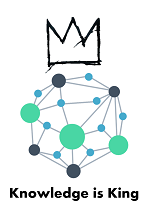Welcome to the KMAP repository. This repository contains the source code and the documentation of the KMAP project.
This project is created in cooperation with the CPU 24/7 GmbH.
The contexmap for corporate data KMAP helps companies worldwide to automatically turn company data into valuable insights. By leveraging modular visualizations, we empower the corporate customers throughout the enterprise to find answers to business related questions without deeper coding knowledge. A responsive step-by-step exploration facilitates quick access to the insights needed. KMAP furthers the communication and transparency across companies and along the value-chain.
This project was created as a university project and is part of the set of AMOS projects hosted by the Professorship for Open Source Software at the University of Erlangen-Nuremberg.
Current development concentrates on creating a minimum viable product for KMAP. Core functionality will be integrating graph data bases, visualizing the graph data in a modular dashboard, and exploring the data with a no-code query builder.
⚠️ Make sure to clone the repository with LF line ending applied when working on windows
-
Clone the repository via
git clone https://github.com/amosproj/amos-ss2021-project2-context-map.git -
Install node from https://nodejs.org/en/ and make sure to add your installation directory to PATH.
It is required to install node with version 12.x or higher. -
Install docker from https://docs.docker.com/get-docker/.
-
Install
yarnby running
npm i -g yarn
- Make sure that docker is running.
- Navigate to the
/builddirectory within the repository clone. - Run
node start-database. A new docker container with the nameneo4j-dbshould run now. If it is only created, but does not run, run the container (you can check if the container is running with the commanddocker psin your terminal).
Run each of the scripts in the following order within a separate shell instance.
4. .\start-backend-dbg.ps1
5. .\start-frontend-dbg.ps1
Run each of the scripts in the following order.
4. ./start-backend-dbg.sh &
5. ./start-frontend-dbg.sh &
Once database, backend and frontend were built for one time, the backend and frontend can also be started by running
[4.] node start-backend-detached
[5.] node start-frontend-detached
To deploy the project execute the deploy script in the repository root directory after cloning.
When working on windows, execute the deploy.ps1 script, on linux and MacOs, run the deploy.sh script.
The deployment artifacts are copied to the artifacts folder in the repository root.
To execute the deployment artifacts on the target machine follow tese steps:
- Make sure that docker is installed on the target machine. If not, install it as described in https://docs.docker.com/get-docker/
If the target machine runs with windows, make sure that docker is running withLinux containers. - Copy the content of the
artifactsfolder to the target machine. - Execute the
kmapscript to run the software on the target machine.
On linux machines, execute thekmap.shscript, on windows machines thekmap.ps1script.
A public demo of the project is available at http://141.144.244.57/.




